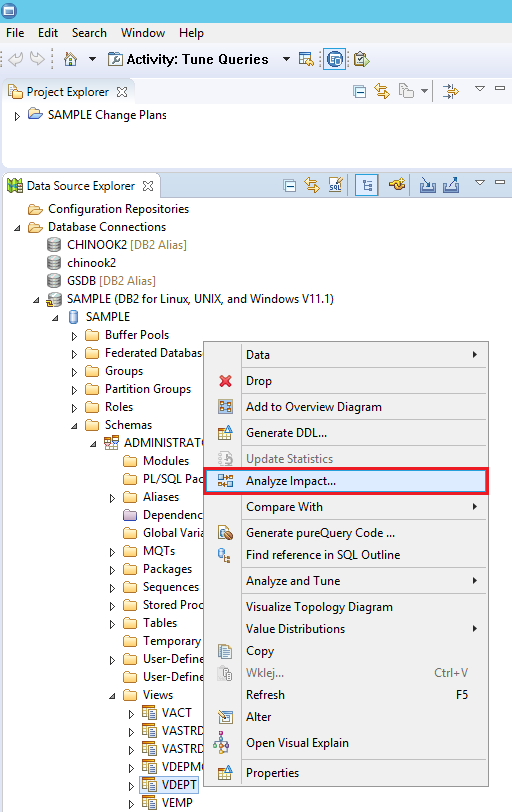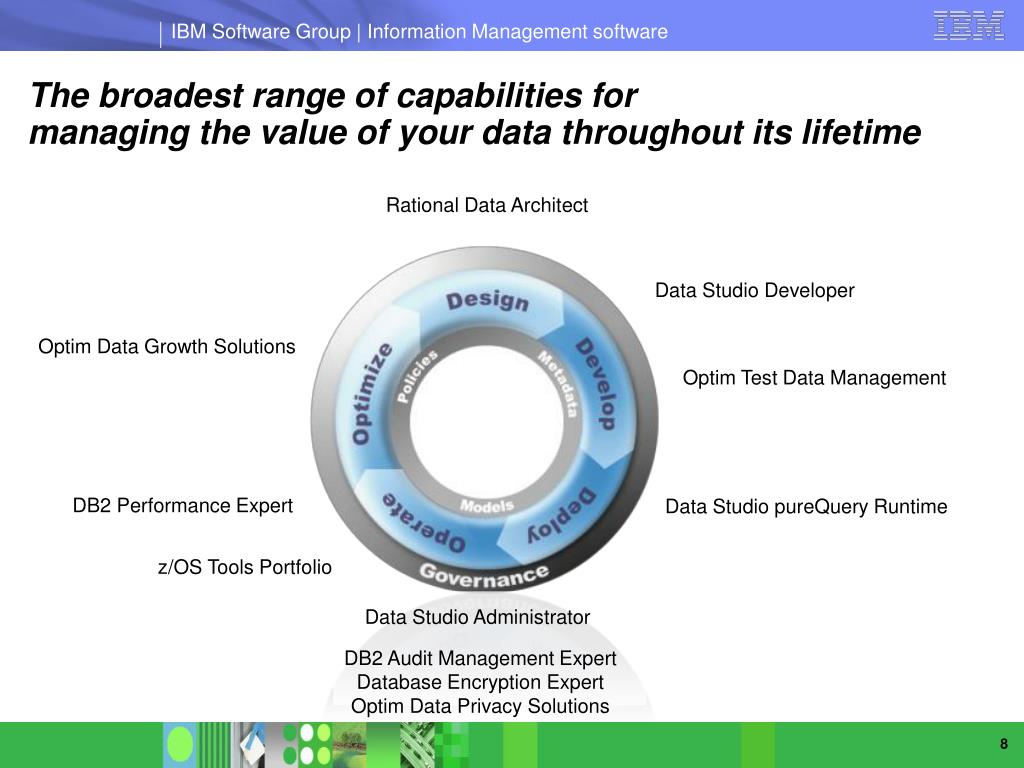

- #IBM DB2 DATA STUDIO TUTORIAL HOW TO#
- #IBM DB2 DATA STUDIO TUTORIAL UPDATE#
- #IBM DB2 DATA STUDIO TUTORIAL FULL#
IBM Data Studio has some options for editing the description of tables in a DB2 database, as described next. There are three options in IBM Data Studio called Activities from which you can view the code.Īll these options can be selected from the Activity option menu buttons.
#IBM DB2 DATA STUDIO TUTORIAL HOW TO#
Step through the query's results and add those to the string builder.įor (int i = 0 i < reader.This tutorial will show you how to edit the descriptions of tables and columns in DB2 using IBM Data Studio. Add the column names to the string builderįor (int i = 0 i < reader.FieldCount i++) Using (OdbcDataReader reader = command2.ExecuteReader()) OdbcCommand command2 = new OdbcCommand("SELECT * FROM SOMEREALTABLENAME", odbcCon) Int count = Convert.ToInt32(command.ExecuteScalar()) OdbcCommand command = new OdbcCommand("SELECT COUNT(*) FROM SOMEREALTABLENAME", odbcCon) Try out a simple command/query - make sure to change SOMEREALTABLENAME to your table's name OdbcConnection odbcCon = new OdbcConnection(connectionStringODBC) "Driver= Database=YOURDATABASENAMEHERE Hostname=localhost Port=50000 Protocol=TCPIP Uid=YOURUSERNAMEHERE Pwd=YOURPASSWORDHERE " The format is pretty specific, just change the YOUR.HERE to real values. C:\Program Files\IBM\SQLLIB\BIN may need to be in environment path. My installation said this had failed, but after going in to Data Studio the database was present. Go figure…Īlso when you set up DB2 you have the option to create a sample database. Not sure what the problem is, I’ve even tried by running it as Administrator and even in the user account that it set up. I still can’t get Data Studio to create a database, so I do that by command line. I eventually just named everything with caps, but Data Studio prepares SQL statements for you that you can edit and remove the unnecessary quotes when creating your tables. Which means that if you create a table named mytable then to query it you’ll need to use “mytable” in your queries. One major annoyance I found with this is that when you type a lowercase name for a table or column name this program will surround it with double quotes. From there you can create your databases, tables, import data and run queries. It was a pretty simple setup and I just went with the defaults. I don’t overly enjoy working via the command line terminal so I went and downloaded IBM Data Studio. If all is set up correctly then you should get a success message. You can try creating a new database with:ĭb2 create database YOURDATABASENAME AUTOMATIC STORAGE YES
#IBM DB2 DATA STUDIO TUTORIAL UPDATE#
Use the following command to set these:ĭb2 update dbm cfg using SYSADM_GROUP DB2ADMNS
#IBM DB2 DATA STUDIO TUTORIAL FULL#
You’ll want all of these to be set to DB2ADMNS which is the user group in Windows that has full access to modify the database. specifically: SYSADM_GROUP, SYSCTRL_GROUP, SYS_MAINT_GROUP, and SYSMON_GROUP. Now you’ll want to change a few of these settings. If this doesn’t work right away then try db2start, which starts the DB2 service. This will print out the config details in the terminal window. Once you launch this you can run the command db2 get dbm cfg. I always run the Administrator version so that I’m sure I have all the access I need. This is done via the newly installed DB2 Command Window. Once you get that all corrected you may also have to make some adjustments to DB2’s configuration. I think that only DB2ADMNS group is required, but I did both. In here you can select your username, right click to get to properties, then in the Member Of tab you can add the user to the user group. Right click on the Start Menu, select Run and type in lusrmgr.msc and you’ll get the Local Users and Groups Manager window. I made it so that my main Windows account belonged to both groups. It sets up two user groups: DB2ADMNS and DB2USERS.

Eventually, I found out that the Windows user you’re logged in as has to belong to a user group that DB2 set up. So after lots of digging around, I found out this was a problem I had and was slowing me down. After setup this account that you choose is the one with default rights to create the database. It wasn’t clear that would happen at the time of installation and I probably could have gone with my standard Windows user credentials. This actually creates a new user on the Windows OS.

You’ll be asked to create a user and password. Basically, just follow the prompts for the typical installation. The installation isn’t difficult, but the installer UI looks like something out of the 90s for Windows 3.1.


 0 kommentar(er)
0 kommentar(er)
